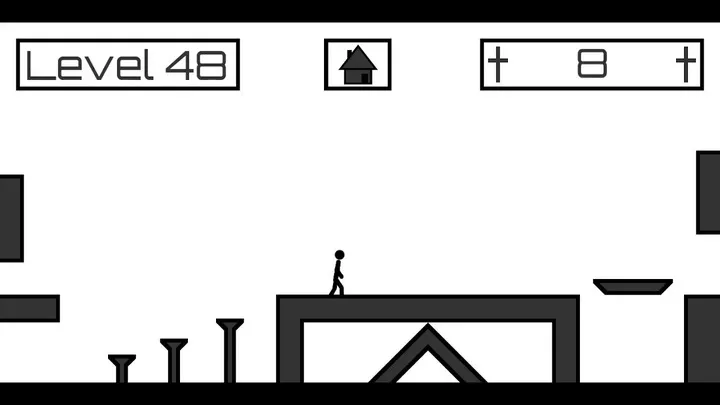StickJump may appear simple on the surface—jump from platform to platform, survive as long as possible, collect points. But beneath that minimalist exterior lies one of the most punishing physics-based timing challenges in mobile gaming. The difficulty comes not from enemies or complicated mechanics, but from the subtle, unforgiving nature of momentum, angles, and speed.
What separates beginner StickJump players from high-score climbers isn’t reflexes alone—it’s the ability to control inertia, manipulate jump arcs, and predict platform rhythms. The game demands a blend of micro-precision and macro awareness, requiring players to think several jumps ahead while adjusting their actions in microseconds.
This guide dives deeply into the advanced, often overlooked techniques that elevate your StickJump performance.
Not general advice, not a basic overview—this is the psychology, physics, timing, and prediction layer of the game.
Understanding StickJump’s Momentum-Driven Gameplay
StickJump is built around a deceptively realistic physics model. Every tap, every delay, every bounce compounds into a chain reaction that determines whether you soar to a safe platform or fall into the abyss.

Why Momentum Matters More Than Jump Strength
Momentum determines:
- How far your character flies
- How high the arc peaks
- How quickly you must react to the next platform
A fast-moving character produces long, flat jumps that require accuracy. A slow-moving character produces short, steep jumps that demand careful timing.
Watching Platform Spacing Instead of Your Character
Beginners focus on their character’s position. Skilled players focus on:
- Platform distances
- Relative movement speed
- Potential landing pathways
The character becomes secondary to the environment.
Perfecting Timing Rhythm
StickJump is all about rhythm. Even static platforms create a musical flow, and moving platforms amplify this requirement.
Tap Timing Over Tap Force
Your tap is binary; the game doesn’t read pressure. But timing is everything.
Small delays drastically alter the trajectory.
Building Your Personal Jump Tempo
Every player naturally finds a tempo. Identify yours by observing which sequences feel comfortable.
Then expand or compress that tempo depending on platform spacing.
Reading Platform Patterns Early
Most players jump reactively. High-level players anticipate platforms several seconds before landing.
Identifying Platform Clusters
Platforms often spawn in clusters with predictable spacing. Learning to read these clusters allows you to prepare a chain of movements rather than reacting jump-by-jump.
Escaping “Trap Formations”
Certain patterns—such as tight vertical stacks or wide horizontal gaps—are intentional traps. Avoid panic.
Instead, adjust your momentum before reaching them.
Using Micro-Adjustments to Stabilize Jumps
Micro-adjustments are tiny changes in timing that stabilize your run.

Resetting Bad Momentum
If your arc becomes too flat or too steep, intentionally slow down by delaying the next jump.
This prevents chained failure.
Momentum Correction Scenarios
Common scenarios where corrections save runs:
- Overshooting platforms
- Undershooting due to hesitation
- Drifting toward the edge of a platform
Small timing tweaks recalibrate your trajectory.
Mastering Moving Platforms
Moving platforms are where StickJump becomes psychological. Many players freeze or overthink.
Treat Moving Platforms as Math, Not Chaos
Every moving platform follows:
- Speed
- Direction
- Pattern
Learning these patterns removes randomness from the challenge.
Landing on Toward-You vs. Away-From-You Platforms
Platforms moving toward you shorten jump distance.
Platforms moving away demand early jumps.
Recognize these behaviors instantly.
Predictive Jumping
Predictive jumping is the art of jumping not where platforms are, but where they will be.
Forward Projection
Project platform positions a half-second into the future.
This prevents last-second panic jumps.
Using Peripheral Vision
Train your eyes to not lock onto your character.
Instead, widen your view to catch the next three platforms in your periphery.
Managing Panic and Cognitive Overload
StickJump becomes visually overwhelming at high speed. Your brain wants to panic.

Recognizing Panic Triggers
Common panic triggers include:
- Sudden speed increases
- Unfamiliar platform layouts
- Rapid direction changes
- Long horizontal jumps
Identifying your personal triggers reduces surprise.
Slowing Your Mind During Fast Sequences
Even when platforms come quickly, mentally slow down.
Focus on:
- One clear decision at a time
- Maintaining breathing
- Using timing beats
This stabilizes performance.
Optimizing Long-Run Efficiency
Long runs require endurance—not physical, but mental.
Reducing Decision Fatigue
Decision fatigue leads to mistakes after long sequences.
To reduce this, rely on pattern recognition rather than constant conscious decision-making.
Maintaining Consistency
Consistency is built by:
- Establishing a personal jump rhythm
- Memorizing common platform types
- Using predictable timing windows
Less thinking = longer survival.
High-Level Strategies for Competitive Play
For players seeking leaderboard scores, high-level strategies matter.

Creating an “Autopilot Zone”
The best players enter autopilot states where movement becomes instinctual.
Risk Calculation on Every Jump
High-level StickJump is risk management:
- When to play safe
- When to take long jumps
- When to stabilize momentum
Conscious risk choices separate top players from average.
Mental Training Techniques to Improve StickJump Skill
Because StickJump is rhythm-based and visual-reaction heavy, you can train outside the game too.
Rhythm Counting
Using real-world rhythm patterns improves timing consistency.
Reaction Conditioning
Simple exercises like tracking moving objects with your eyes improve predictive reaction speed.
Conclusion
StickJump is more than a casual physics jumper—it is a layered, timing-driven experience where momentum control, predictive thinking, psychological resilience, and platform-reading skills all combine into a single fluid discipline. Mastering these deeper mechanics requires more than fast fingers; it demands patience, awareness, and the ability to analyze platform patterns in real time.
By training your mind to read the environment, adjusting momentum with micro-precision, and maintaining calm during high-speed sequences, you transform StickJump from a chaotic challenge into a predictable system you can control.

















